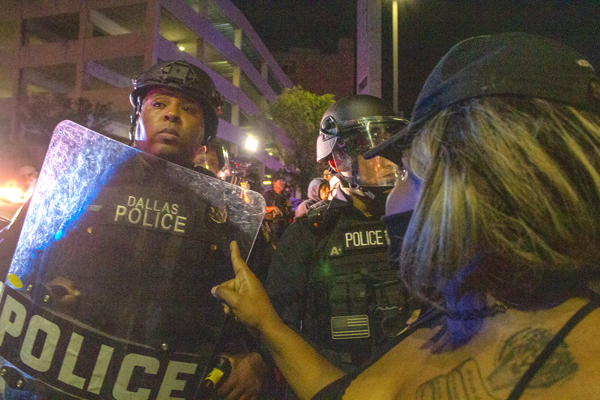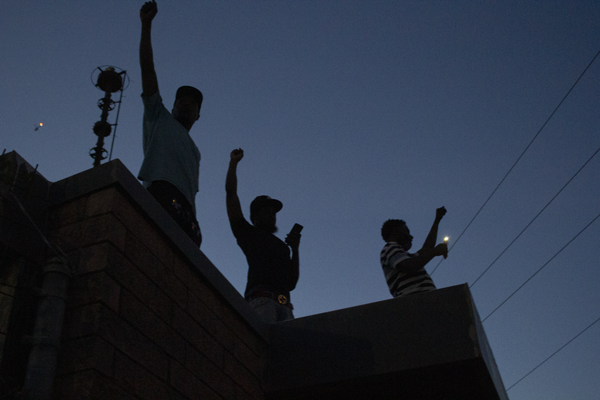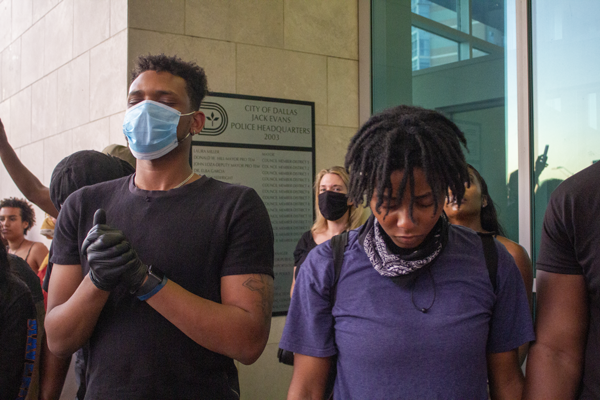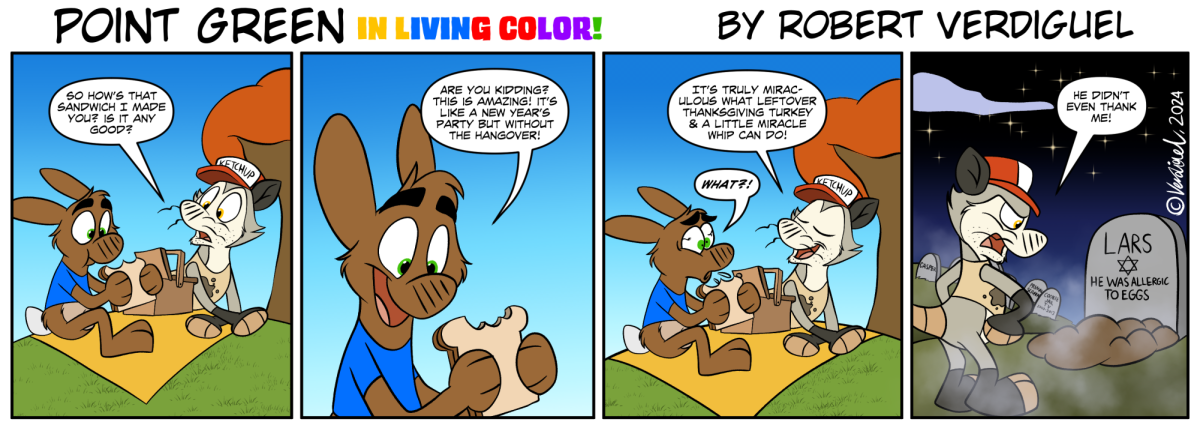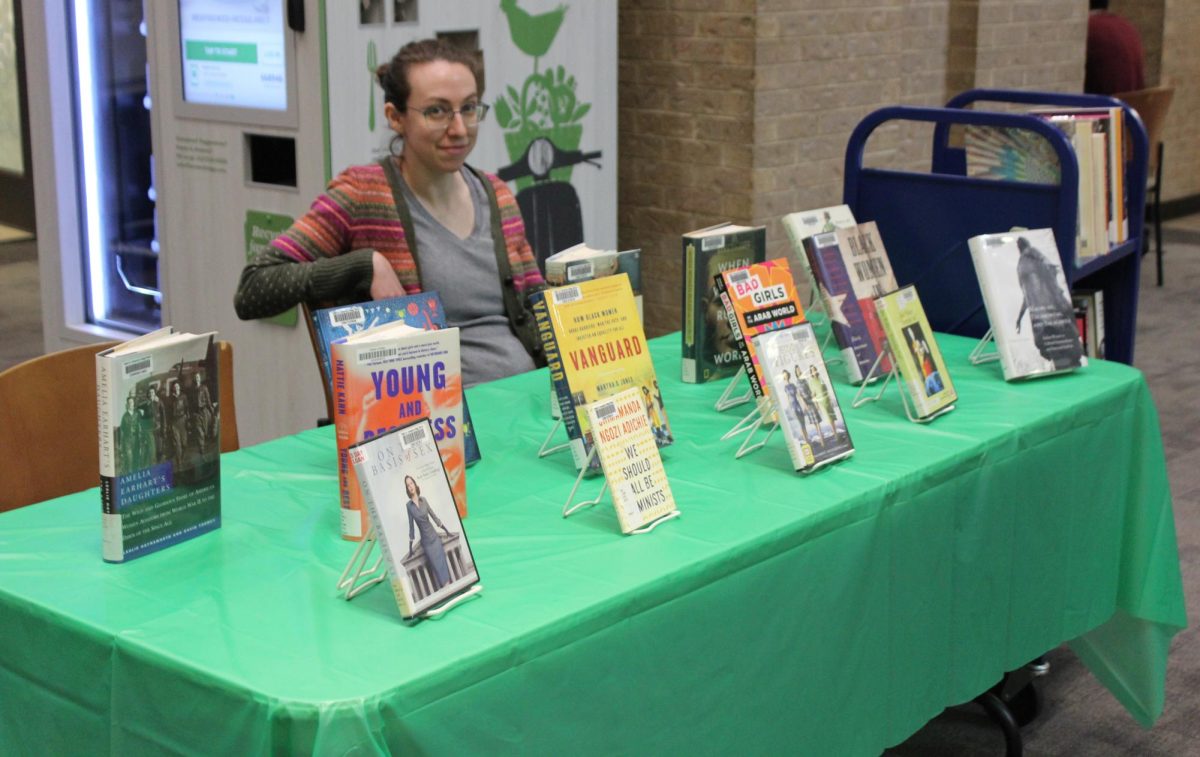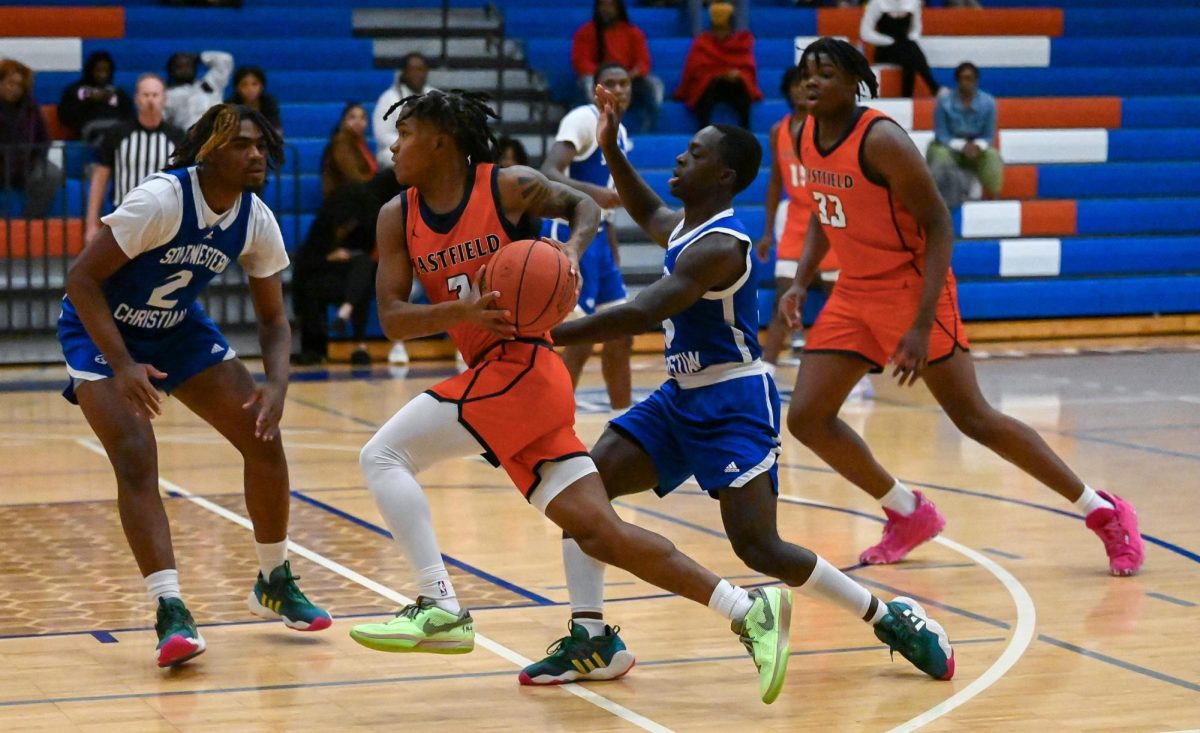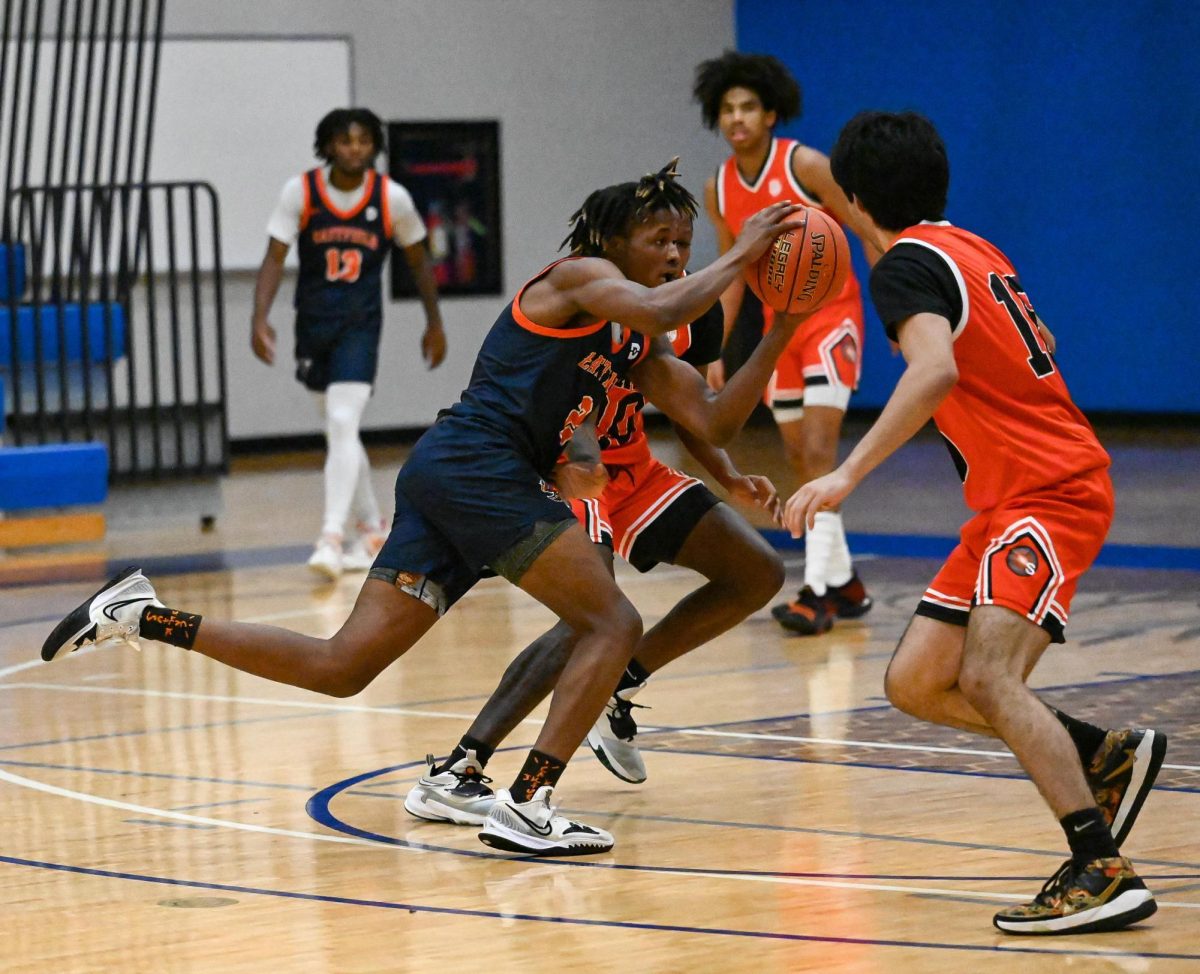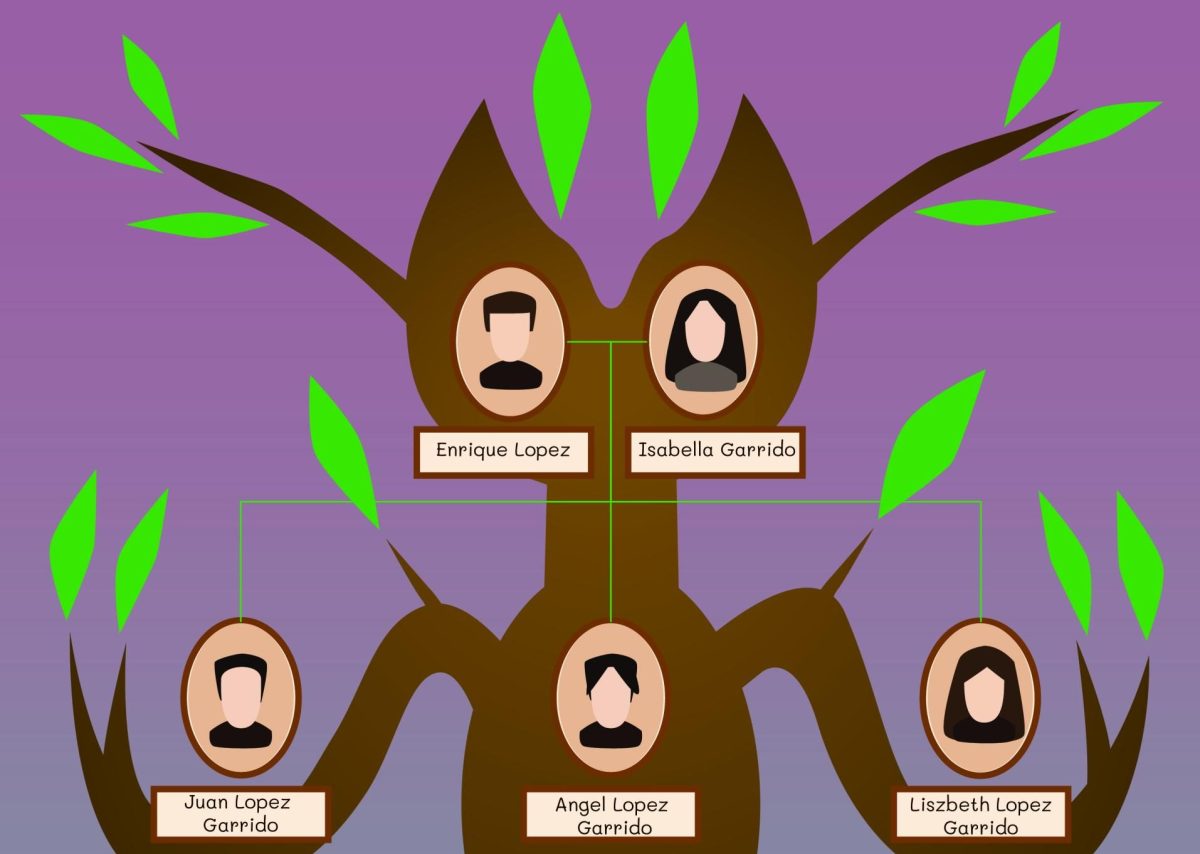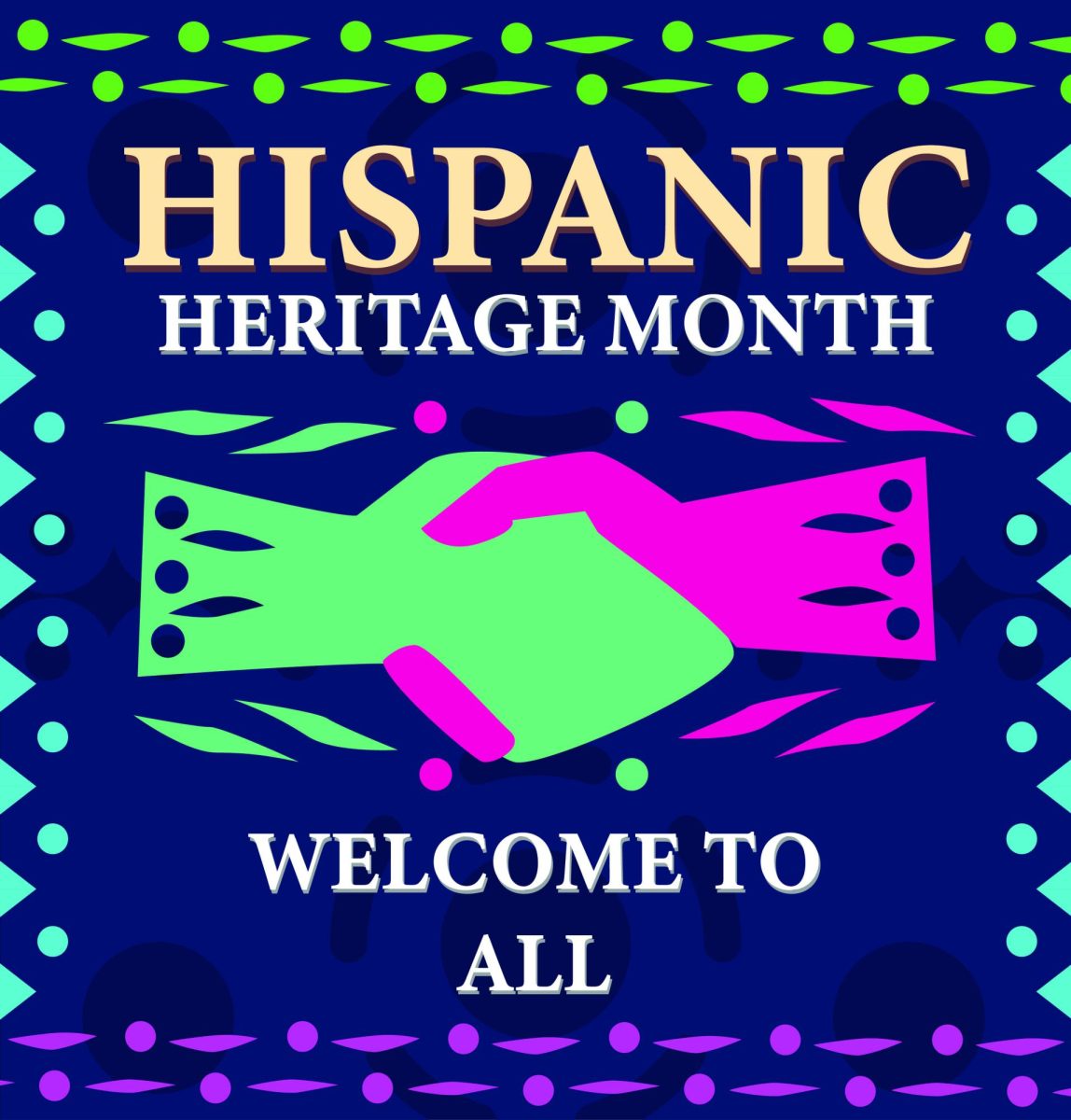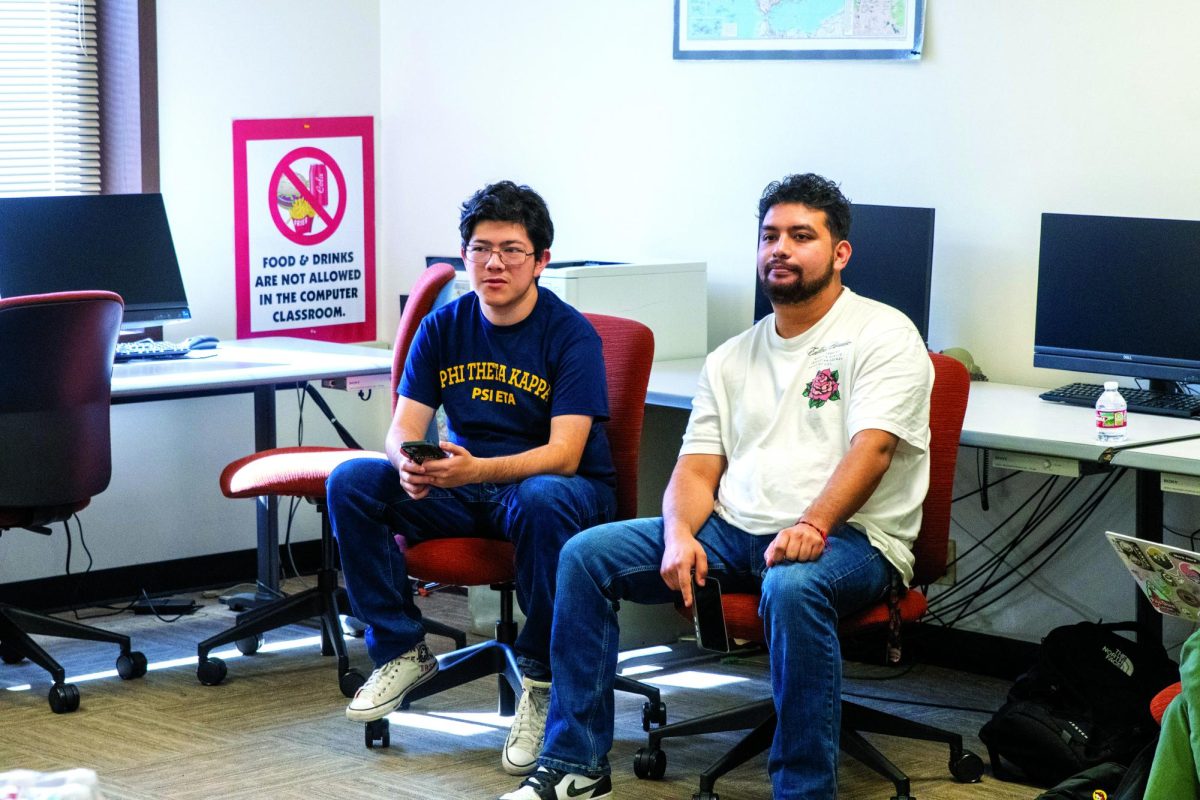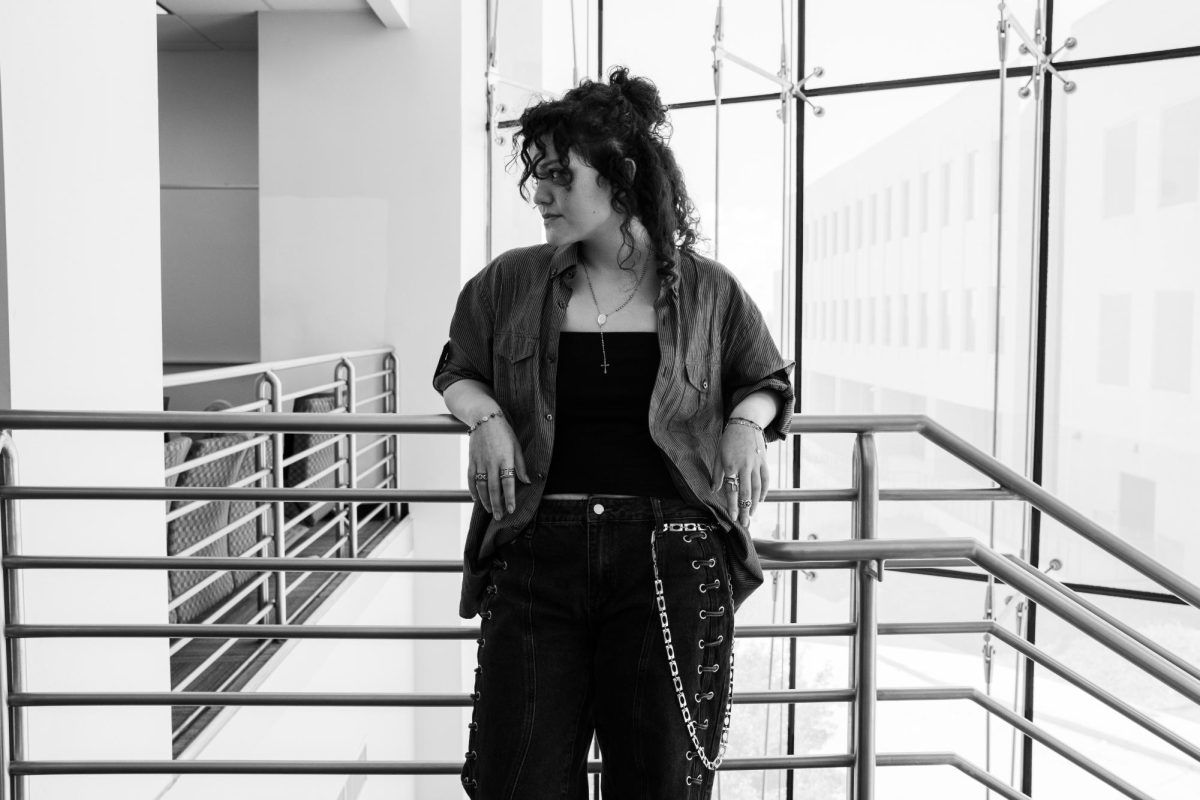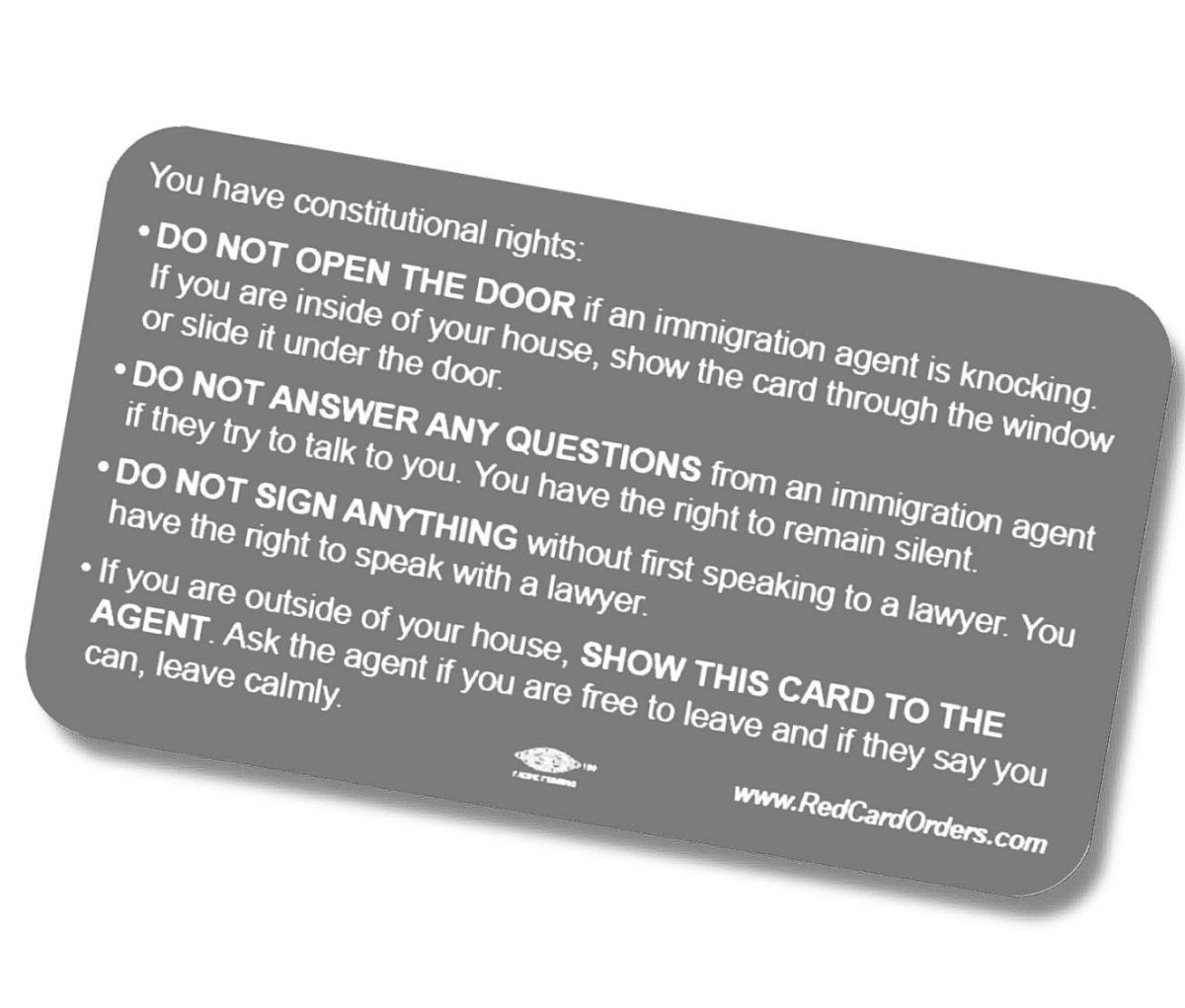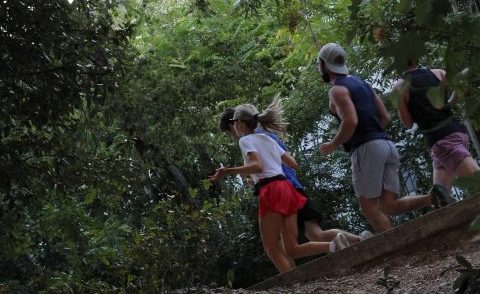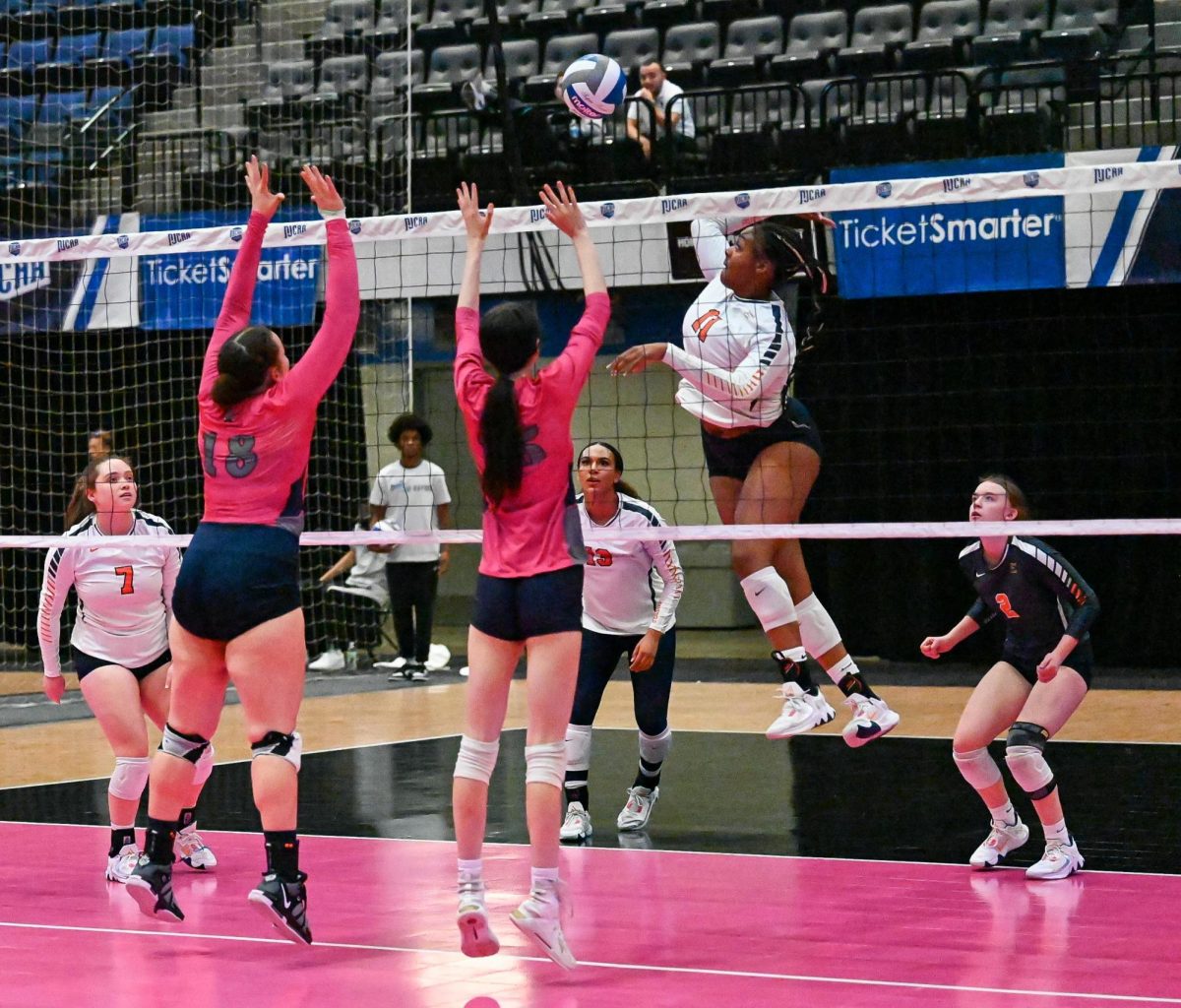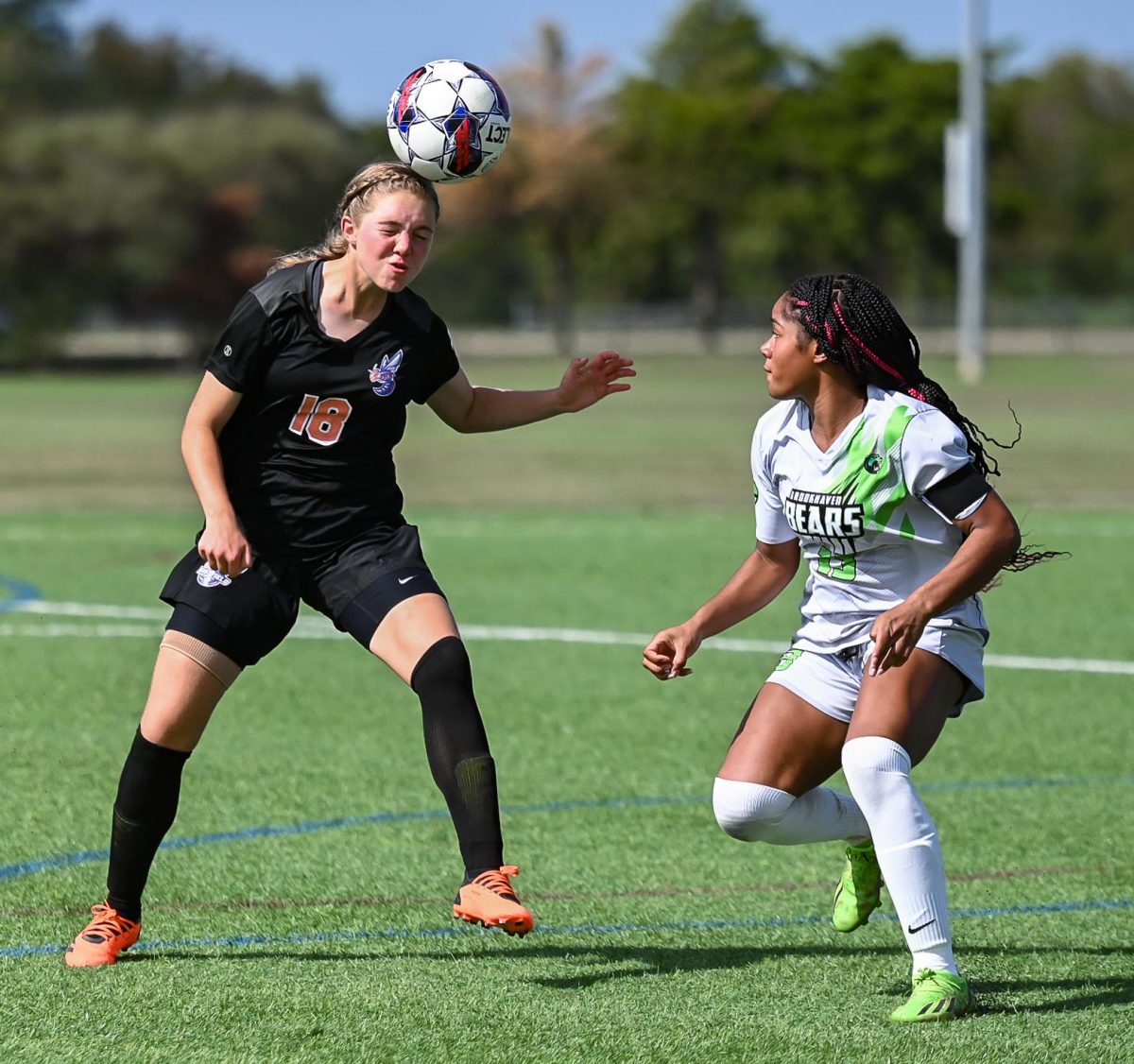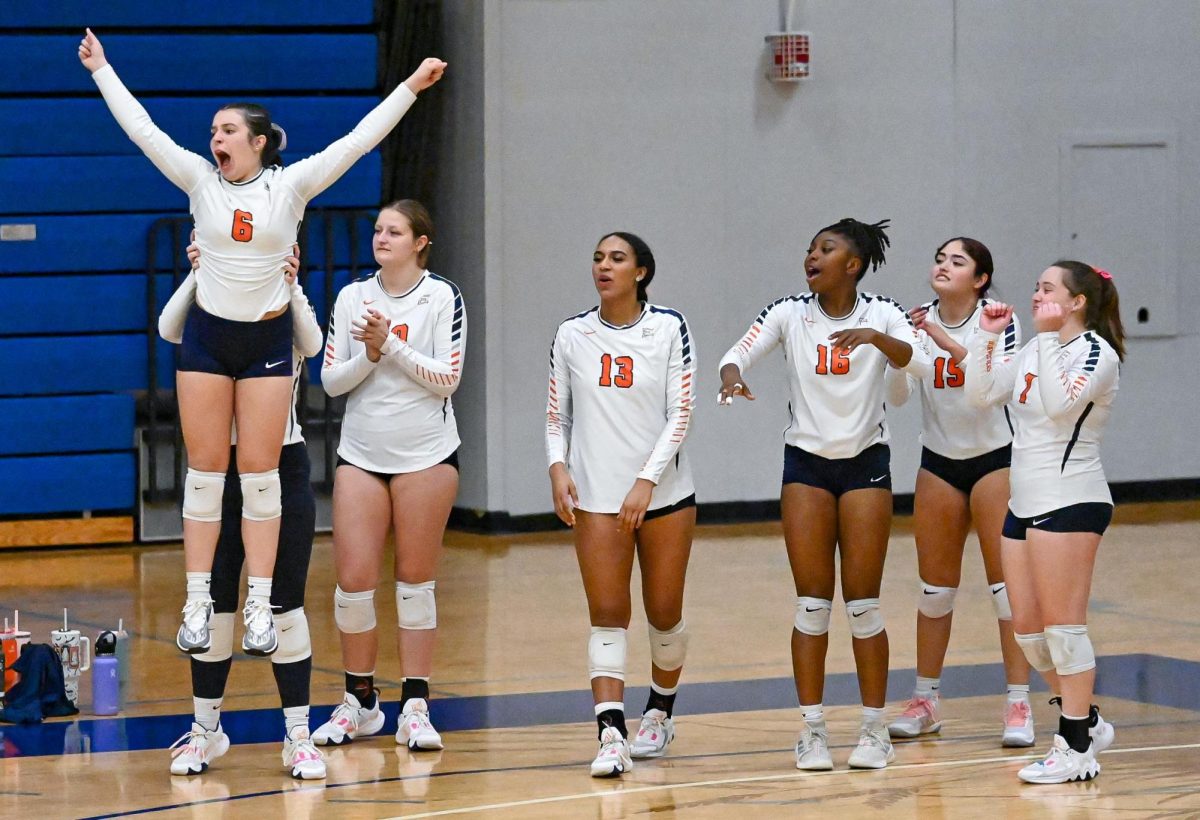
By SKYE SEIPP
@seippetc
Jeremiah Roland began shaking as a police officer approached his vehicle. He wasn’t speeding and
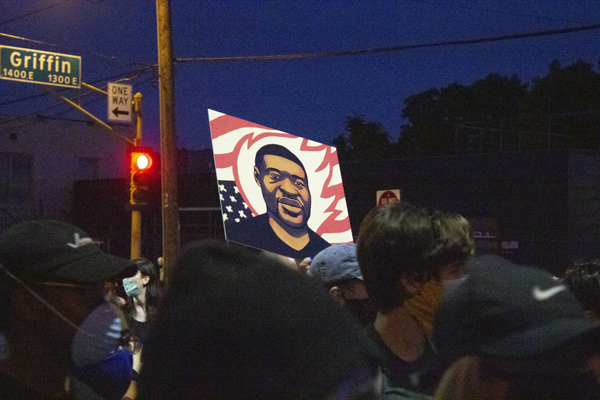
wondered why he was being stopped.
“Black men are scared when we’re in the car and get pulled over,” he said.
The officer told Roland his brake light was out. But when he looked back, he saw three other police cars had pulled up to the scene.
Roland is an architecture major and basketball player at Eastfield, not a criminal. He said it appeared the police were racially profiling him, and that’s why other officers were called.
“They see a black dude. He’s kind of tall and wearing a little bit of accessories. They’re gonna be like, ‘Oh, he’s a gang member,’” Roland said. “And you already know what they do to them: slam them on the ground. … And I’m not with that. I wouldn’t be resistant, but I wouldn’t want my life taken.”
Racial profiling is a reality black Americans say they face every day. This reality has left Roland terrified of the people who are supposed to “serve and protect” the community. For Roland, and all black Americans, racist stereotypes can lead to their death, he said.
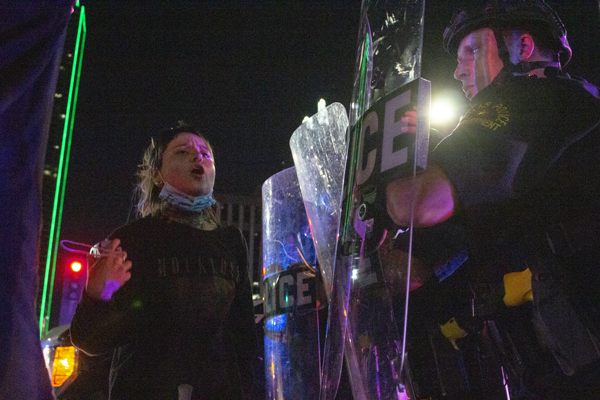
George Floyd is just one example. The 46-year old black man who grew up in Houston was killed on May 25 in Minneapolis when a white police officer, Derek Chauvin, pressed his knee on Floyd’s neck for 8 minutes and 46 seconds. Floyd was unresponsive for almost 3 minutes, but Chauvin still kept his knee pressed into the back of his neck.
Floyd was being arrested for allegedly using a fake $20 bill to buy cigarettes.
His death was captured on video by a passerby, and the video went viral on social media.
Three other officers stood by as Floyd begged for help. Among his final words were “I can’t breathe,” echoing the plea of Eric Garner, who was killed in 2014 by a New York police officer in a similar fashion when he was stopped on suspicion of selling loose cigarettes. The words “I can’t breathe” have since become a rallying cry for Black Lives Matter supporters.
Dallas County Community College District Police Chief Lauretta Hill said she was outraged after witnessing the “murder” on video. She added that there is no training in law enforcement that teaches placing a knee on a suspect’s neck.
“I was angry, upset, outraged, sad and extremely disappointed in those officers,” she said. “The way they handled it and the fact that they lacked empathy, … sensitivity and just the dignity of a fellow human being.”
It's taken me a long time to post anything without pure anger about what happened to #GeorgeFloyd. This is criminal and unacceptable. Law enforcement everywhere needs to speak up. Do not ask me why #BlackLivesMatter
— Lauretta Hill (@ChiefLHill) May 27, 2020
Following Floyd’s death, protests erupted in all 50 states and in other countries in support of the Black Lives Matter movement, calling for an end to police brutality and systemic racism. Protests in Dallas began on May 29 and have continued every day since.
Government professor Marcene Royster said what made the Floyd video more impactful than others was the brutality of the method used. She compared it with the recent killing of Ahmaud Arbery, a black man who was shot and killed by white residents while jogging on Feb. 23 in Glynn County, Georgia. The shooting was captured on video, but Royster said it didn’t compare to watching a man draw his last breath on camera.
Our country must “confess its sin and mistreatment of people of color,” she said.
“Not [even] an animal would be treated that way,” she said. “White America needs to accept the fact that other people than them make up this country and are important.”
[supsystic-gallery id=5]
‘Bodies on the line’
Some protests, including those in Dallas, devolved into rioting with property damage, vandalism and looting. Eventually, a 7 p.m. curfew was enacted. National Guard, state police and local police were called in to control crowds.
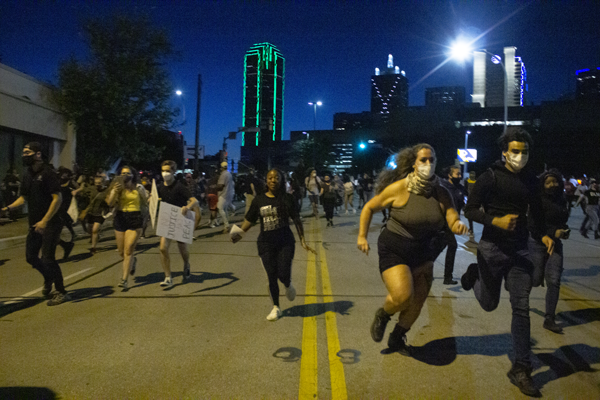
The first protest in Dallas was May 29 and began with a peaceful gathering at the Dallas Police Department about 6:30 p.m. Eventually demonstrators marched into the city.
As protesters crossed over East R.L. Thornton Freeway from Akard Street, police presence intensified, and tensions began mounting. Demonstrators gathered around cars, shouting at police and blocking squad cars from moving. Protest leaders, who were marked in white bandanas, worked to push back the crowds surrounding police to keep tensions down.
Their efforts failed.
Armored police vehicles arrived, and police eventually formed a line with raised riot shields. The escalation continued until tear gas was fired, which Police Chief Reneé Hall said was because objects were thrown at officers and police vehicles were damaged.
Protesters began moving through downtown to Deep Ellum. Along the way windows were broken and some stores were looted. As the crowd moved out of Deep Ellum, a metal band trio with amplifiers hooked up to a car battery revamped the energy of demonstrators with blistering guitar riffs, screeching vocals and heavy drumbeats.
The following day, tear gas, rubber bullets and other means of suppression were used liberally on
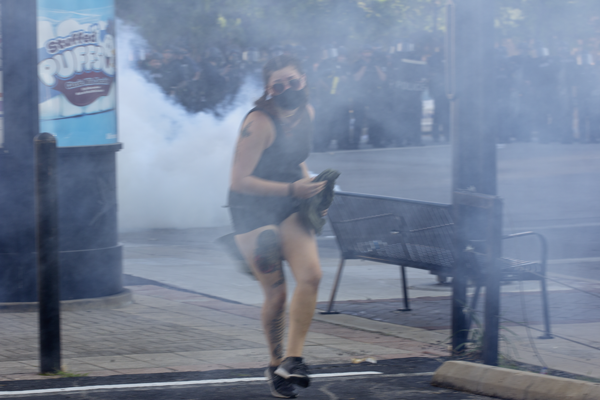
protesters to break up crowds after a peaceful gathering at City Hall became destructive. By 10:45 p.m. Dallas police said 74 arrests had been made, including a photojournalist.
Most of the day was a cat-and-mouse chase between demonstrators and police forces. Groups of protesters would be split up by police, only to find another group and continue marching. As with the previous day, some people damaged property, looted and vandalized buildings.
Dallas was not the only city where protests became violent. Demonstrators in Minneapolis burned a police station, and Louisville was the site of destructive protests after police relations with residents were already broken after the killing of Breonna Taylor, who was shot and killed by police while sleeping. New York City, Washington D.C., Atlanta, Los Angeles and other major cities around the U.S. dealt with similar demonstrations.
After two nights of Dallas becoming a chemical war zone, Sunday saw peace in the streets. A curfew was set for 7 p.m., and the largest gathering was at Freedman’s Memorial Cemetery off of Interstate 75, where an afternoon vigil for those killed by police was held. In contrast to two days of chaos, people peacefully paid their respects to an altar, burned sage and sat in groups across the lawn of an unmarked mass grave of nearly 5,000 slaves.

Sociology professor India Stewart attended the vigil and was planning to protest downtown afterward. It was her first day of attending a demonstration and said she went because “black lives matter.”
“Since the inception of this country, people haven’t quite gotten that,” she said. “Sometimes we have to put our bodies on the line. … Sometimes the only time power will concede is with a demand, and so we have to demand that.”
Stewart said there is no proper way to protest in regard to the riots that had taken place in the days prior.
When it came to following the city curfew, Stewart said it would depend on the situation at the time as to whether she would leave.
“There are just laws and there are unjust laws, and sometimes we are bound to do the right thing,” she said. “And what’s right changes depending on when and where you are. At one time slavery was the law of the land.”
The streets were cleared at 7 p.m. Police roamed the streets arresting demonstrators breaking the curfew and warned others to leave. Tear gas was fired at a group that was marching when the curfew began.
Since then protests in Dallas have been mostly peaceful with no riots, property damage or looting. However, 674 people were detained June 1 by Dallas police for “obstructing a freeway” on the Margaret Hunt Hill Bridge. Hall said protesters would not be charged, but initially all were going to be.
Despite all of this, protests have continued every day across North Texas and the country. Suburbs, including Mesquite, and surrounding counties have had protests and marches calling for changes to policing tactics.
‘This is a systemic problem’
All four officers involved in Floyd’s arrest were fired the day after his death. Chauvin was charged with second-degree and third-degree murder, along with manslaughter. The other three officers are charged with aiding and abetting murder.
Floyd’s death at the hands of the police is not the first to cause outrage and demands from citizens for policing in communities to change.
In 2019, police killed 1,098 people, according to data from Mapping Police Violence. About 24 percent of the victims were black.
Blacks make up 13 percent of the U.S. population. The data also shows that blacks are 2.5 times more likely to be killed by police than whites.
One percent of officers involved in killings were charged with crimes between 2013 and 2019.
“We constantly live in environments that are laced with gunpowder,” OSER program coordinator Brynndah Hicks Turnbo said. “And when something like this happens to Mr. Floyd, Breonna Taylor, Arbery, … and there are no charges, it’s as if you have poured gasoline on gunpowder.”
Black Lives Matter began in 2013 after George Zimmerman was not charged for the killing of Trayvon Martin, a 17-year-old black teen who was returning home from the store. Since then, the movement has protested countless other killings of black Americans, typically by police officers, that supporters deemed unjustifiable.
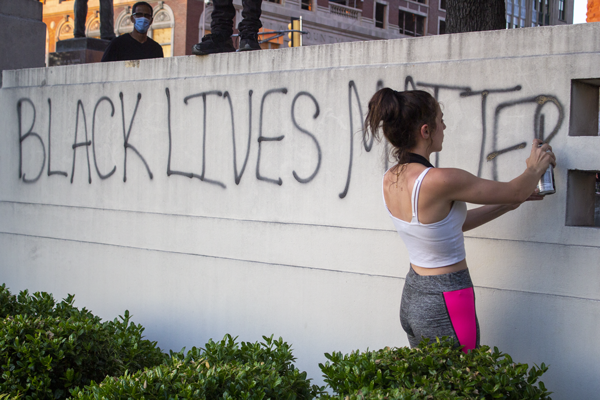
Many activists have called for reforms in policing, with one of the latest trends to defund police departments and end the militarization of police. The idea would be to cut some funding from police departments and reinvest it in other areas of the community, such as education, job opportunities and housing.
Police departments typically take up a large portion of cities’ budgets. For instance, Mesquite
allocated over $39 million for the police this fiscal year, which is the largest expenditure in its nearly $131.5 million budget.
Most supporters say the idea is to take the responsibility of mental health cases, homelessness and drug addiction away from police. In Eugene, Oregon, a group known as CAHOOTS handles mental health and homeless calls rather than police. The budget for the program is $2 million and the group responds to 20 percent of police calls, according to a report by The Register-Guard in Eugene.
After the killing of five Dallas police officers in 2016, then Police Chief David Brown said police in America were being asked to “do too much” when funds weren’t available to deal with “societal failures,” like drug addiction and mental health.
“Policing was never meant to solve these problems,” Brown said.
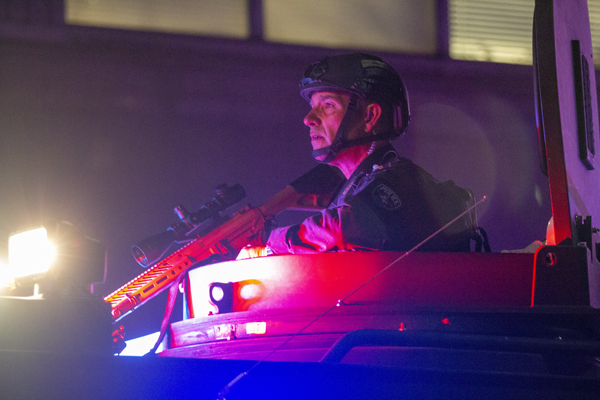
Activists are also calling for police departments to stop buying military equipment.
In Minneapolis, Mayor Jacob Frey was asked by protesters if he would defund the police department. When he said no, the crowd booed and shouted, “Go home, Jacob!”
The following day — June 7 — nine members of the Minneapolis City Council agreed to dismantle the police force and completely redo the department to focus on a community-led system. No details were made available as to what this will look like.
Hill does not support defunding police departments but said there is a need for change. She cited police unions protecting bad officers and officers needing more training in de-escalation tactics.
She said since racism exists in America, it will come out in police.
“This is not the first unarmed black man that has been murdered by law enforcement,” Hill said. “This is a systemic problem.”
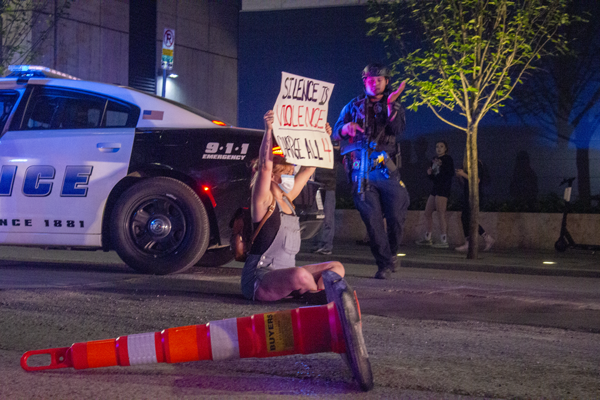
History professor Liz Nichols said there is a culture within police departments to stay silent, even if other officers are doing wrong.
Nichols has seen this first-hand. Her ex-husband has been an officer with the Dallas Police Department for over 30 years.
She said about 28 years ago he was chasing a suspect. After finally catching the suspect and beginning to handcuff him, more officers pulled up to the scene and began hitting the perpetrator.
He filed a complaint with internal affairs. Within two weeks, an internal affairs report was filed on him, she said.
It took six months and the help of Black Police Association and Dallas Commissioner John Wiley Price to clear his name.
“I think that’s a very telling incident in illustrating the endemic problem within police departments: that you’re taught not to tell,” she said. “The culture is ingrained to bury those incidences and the bad cops. And if you have the courage and the decency to do the right thing, then you become the target.”
Some of the first policing in the United States was performed by slave patrols, the first of which was established in 1704 in the Carolinas. The first police force funded by taxpayers was established in Boston in 1838 to protect shipping interests.
Nichols said those first forms of policing weren’t created to protect people.
“It was done as a means of controlling dissent,” she said, “which in the big scheme of things goes against every tenant of the Constitution, the Declaration of Independence and the whole idea of democracy.”
[supsystic-gallery id=6]
‘Change has to happen’
Almost since its inception, the Black Lives Matter movement has faced sharp criticism. Some say the exclusionary language leaves out other races. Others try to discredit the movement when protests turn violent.
President Donald Trump, for instance, tweeted that “when the looting starts, the shooting starts,” in response to recent protests across the country. The tweet was flagged by Twitter for “glorifying violence.”
….These THUGS are dishonoring the memory of George Floyd, and I won’t let that happen. Just spoke to Governor Tim Walz and told him that the Military is with him all the way. Any difficulty and we will assume control but, when the looting starts, the shooting starts. Thank you!
— Donald J. Trump (@realDonaldTrump) May 29, 2020
Courtney Pickens, program coordinator for the Bee Aware Team, said rioting is the voice of people who are “unheard.”
“When has revolution not been dangerous?” she asked. “You can’t be comfortable and status quo and be revolutionary. There has to be some kind of friction. There has to be some kind of spark. That’s the American way.”
Pickens drew ties between this movement and the Boston Tea Party, one of the starting points for the American Revolution, when some colonists dumped tea from British ships into Boston Harbor.
Peaceful protests against police brutality over the past seven years have also drawn criticism, probably the most famous being San Francisco 49ers quarterback Colin Kaepernick’s decision to take a knee during the national anthem in 2016.
“When we do it nice, no one listens,” Pickens said. “When we do it not so nice, now it’s, ‘Oh no, we gotta get this under control.’ … Either way, change has to happen.”
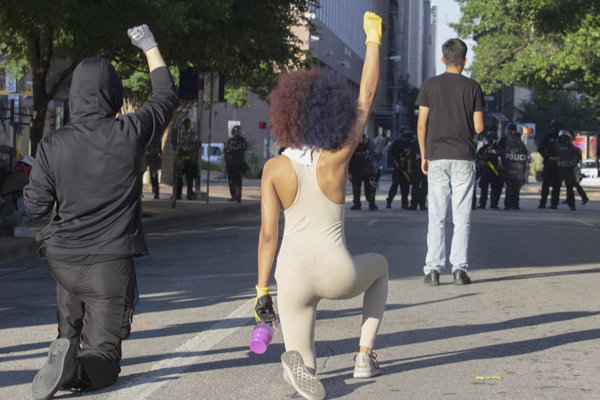
Music major Arthur Garcia said there are a lot of people in America who judge people based on the color of their skin, and as long as racism continues, the country will never truly be united.
He said protests are good, but riots are counterproductive and go against what people are fighting for.
“The only true way these protests will succeed is if people continue to protest peacefully and show that the only thing that’s going to get us through this is peace, love and positivity,” Garcia said.
For people who shout that “all lives matter” in contrast to “black lives matter,” Nichols uses an analogy to help them understand the cause: If a lifeguard is watching over a pool of 100 people and one person begins drowning no one yells “all people in the pool matter” when the lifeguard saves them.
“Black Lives [Matter] doesn’t say they’re better than,” Nichols said. “The phrasing is to acknowledge and give voice to a group that is continually marginalized and harmed.”
Stewart said the protests, while mainly focused on policing, are also about the systemic racism present in all institutions in America. Stewart said the military, schools, police and banking systems are all examples of institutions that negatively affect black Americans.
“All of these institutions are interlocking, so sometimes they do form, depending on who you are in society, a matrix of oppression,” she said. “It’s not any one thing. It’s all of these things together and how they intersect that leads to these inequalities in these systems. It’s not even so much about dismantling these systems as it is about giving everyone a fair shot within these systems. … We have agency and power. We just have to use it.”
‘I am absolutely drained’
Many black Americans tell their children from an early age, to be careful when interacting with the police.
Hicks Turnbo said “the talk” is about protection and making sure black men and boys understand that some police officers will try to provoke them.
“The talk is not based on the odds of running into that fair police officer,” she said. “The talk is the probability of you being pulled over by an [officer] who wants to challenge you, who wants to provoke you to a state of anger so that they can have a justifiable reason for arresting you.”
Chief Hill said she tells her 12-year-old son that not all cops are like her.
“People see you, as a young black man, as different or less or threatening,” she tells him. “Until something changes, you need to protect yourself.”
All five mothers interviewed for this story expressed similar concerns and said they have talked with their children about being cautious when dealing with police officers.
Royster has told her son, who is now in his 40s, to be respectful by saying “yes sir,” to keep both hands on the steering wheel, have his driver’s license and registration out and not to argue if the police begin to take him away.
“Every black child, every black male, has been told that since the time they go to school,” she said.
Royster still fears for her son and all the other male members of her family, including her husband, whose career was in law enforcement.
“I’m tired of wondering if I’m going to get that call in the middle of the night,” she said. “I am absolutely drained, and I almost have no more tears left and close to no more prayers. And I tell you, that’s a terrible place to be.”
— Sazoun Grayer contributed to this report


